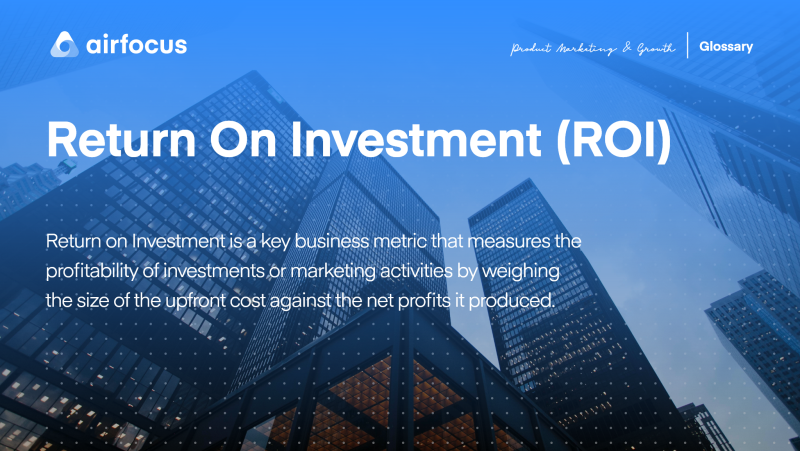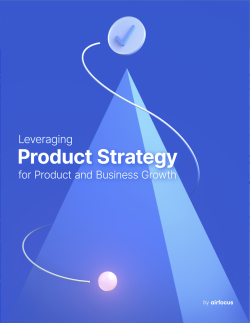Return on Investment (ROI)
What is Return On Investment (ROI)
Definition of Return On Investment
Return on Investment, or ROI, shows how profitable an activity was by looking at its upfront cost versus the net profit it produced.
ROI could take into account how much time and effort was invested in the activity and provide a measure of how efficiently you used your resources.
Clearly, ROI is one of the most important metrics to consider when making business decisions. If you want to be sure that you’re investing in the right things, ROI is your way to find out.
How do you calculate return on investment (ROI)?
ROI is a snapshot figure of how much money you’re bringing in compared to how much money you’ve invested. ROI is easy to calculate as long you keep track of your accounts well.
First, work out the net income of the investment. That means subtracting the initial value of investment from the final value of the investment. New product launches often have a high initial investment value due to purchasing new stock. Your company may require new equipment to produce the new product or require a large marketing push.
Next, divide the cost of investment by this number. Tally up every cent spent across the board, from materials to advertising spend. Again, this figure can be high for new product launches.
Finally, multiply this figure by 100%. You might notice that this figure can be positive or negative. The idea behind this step is that a single percentage is much easier to interpret.
In a perfect world, the higher this figure, the better. However, for start-ups, there’s a strong chance that this figure will initially be negative. You’ll have invested money in stocks, buildings, and marketing — all major upfront costs. Ultimately your goal should be to improve your ROI each year.
People debate how often you should calculate ROI. This relies largely on your product lifecycles. Your product sales may alter during various seasons of the year, you may have a plan to launch a new product per quarter, or your sales could be fairly consistent throughout the year. Once you determine this, you can work out your ROI figure as frequently as you need.
What is a good ROI on an investment?
According to Forbes, 7% is considered a good ROI. However, this figure is designed for multinational corporations. For small businesses, year one should be looked at as a learning curve. If you can break even or even make a small profit, that’s significant. Around 60% of small businesses fold within their first three years. Even if year one ends with a negative ROI, you should aim to make progress the following year. Building up your infrastructure in your first year can help improve your ROI in subsequent years.
For small businesses and start-ups, ROI isn’t necessarily a key metric to measure to show how successful you’ve been. Cash flow figures, conversion rates, and revenue/profit numbers are necessary when the aim is to survive in a competitive market. If you’re not looking for external investment just yet, don’t pay too much attention to ROI but still include it in your accounts for reference.
If you’re looking to expand your business and bring in investment to do so, ROI is the key figure they will look at. Investors want to estimate how much money they will receive for backing your company, so knowing your ROI is essential.
Your ROI will be compared to your competitors’ ROIs — competitors who may be competing against you for certain investments. Remember that ROI isn’t the be-all and end-all, but it’s often the first figure investors examine.
Risky investments will demand higher potential returns. In this case, investment is often spread across a period of time to ensure some return. Cash may be drip-fed into the business rather than in a lump sum to spread that risk across several months or years.
Examples of ROI in action
Return on Investment is often used in marketing to measure how effective a piece of marketing has been at bringing in new business.
Imagine your business decides to launch a digital marketing campaign to coincide with the launch of a new product. You choose Google pay-per-click as your main marketing channel and commit to a budget of $5,000 per month.
After running this for 3 months, you review sales and find that you have secured 7,000, thanks to the PPC campaign. If your product costs $10 with a margin of 50%, then you’ve made $5 on each sale, or total profit from sales of $30,000.
To work out your Return on Investment, simply subtract your marketing costs from the profit you made. In this example, that’s easy.
$30,000 - $15,000 = $15,000
Congratulations, you doubled your investment!
That’s $2 back for every $1 spent or an overall Return on Investment of 100%.
ROI is also used to work out how wisely you might have invested in stocks and shares.
If you decided to buy 1,000 shares of a stock at $10 each, then sold those a year later for $12 a piece, you’ve made $12 for every $10 you spent, or $1.20 for every $1. In this case, your return on investment is 20%, because you made back your initial investment plus an extra 20%.
You can calculate your own ROI by using the following formula:
((net return on investment) – (cost of investment)) / (cost of investment) x 100
So, $12,000 Return on Investment, minus the $10,000 cost of investment = $2,000.
Then divide this by the cost of the investment ($10,000) and you get 0.2.
Finally, multiply this by 100 and you get 20% as your overall ROI.
Common challenges when calculating Return on Investment
Unfortunately, things are not always as straightforward as the examples above. Calculating ROI can be tricky if the costs and returns are not clear.
With stocks and shares, broker fees and dividends need to be considered. In the world of marketing, costs can change quickly and dramatically (i.e. maybe you have to hire an expert to build your campaign) which adds to the investment cost.
Finally, it is difficult to calculate Return on Investment for some types of marketing. For example, you can’t track results from TV, printed media, and SEO as easily as you can with digital channels.

General FAQ

Glossary categories
Create effective product strategy

Experience the new way of doing product management








